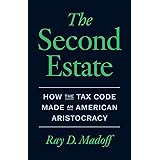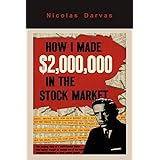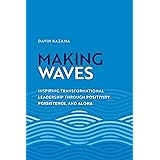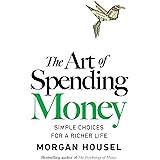Are you wondering how some investors have quietly delivered over 90% returns this year while the S&P 500 struggled? The video above highlights a powerful trend in the precious metals market, particularly focusing on how certain **Gold ETFs** are poised for significant growth. Many believe they’ve missed the boat on gold, yet September 2025 could mark an explosive period for gold investments. This article expands on the crucial insights presented, offering a deeper dive into why now might be a pivotal moment for gold and how you can strategically position your portfolio.
Understanding Gold’s Ascendance: More Than Just a Metal
Gold has recently surpassed $3,500 per ounce. This level seemed improbable just six months prior. However, the real story isn’t just gold’s price. It’s about the underlying market dynamics creating a “perfect storm” for **gold investments**.
1. **Interest Rate Cuts Fueling Demand**
The Federal Reserve is expected to cut interest rates. The CME FedWatch tool shows a high probability of this action. When rates fall, non-yielding assets become very attractive. Think of gold as a silent partner; it doesn’t pay interest, but its value can soar when cash and bonds offer less appeal. This makes holding physical gold or **Gold ETFs** a more compelling choice.
2. **A Weaker US Dollar Advantage**
The US dollar has weakened recently. This makes gold cheaper for international buyers. Imagine gold going on a global currency sale. Massive demand from overseas investors follows this trend. A weaker dollar acts as a tailwind for gold prices.
3. **Geopolitical Tensions and Economic Uncertainty**
Persistent geopolitical tensions remain a concern. Trade tariff uncertainties also loom large. Questions about Federal Reserve independence add to global anxieties. Gold historically shines as a safe haven during such turbulent times. It acts like a lighthouse guiding ships through a storm.
The Power of Operational Leverage: Gold Mining ETFs Explained
The video points out a critical distinction. While gold itself is up 35% year-to-date, specific **gold mining ETFs** have delivered over 90% returns. This difference is due to operational leverage. It’s a secret weapon for sophisticated investors.
What is Operational Leverage?
Operational leverage means mining stocks amplify gold price movements. When gold prices rise by $100, mining stocks can increase by $1,000 or more. Consider it like a magnifying glass for gold’s gains. Their fixed costs mean a small increase in revenue can lead to a significant boost in profits. This dynamic makes **gold mining ETFs** particularly appealing.
Three Key Gold ETFs for Your Portfolio
Let’s delve into the specific **Gold ETFs** mentioned. Each offers a unique way to gain exposure to the precious metals market. Understanding their differences is key to proper allocation.
1. **VanEck Junior Gold Miners ETF (GDXJ)**
GDXJ has delivered a staggering 93.99% YTD return. This ETF focuses on small-capitalization companies. These junior miners have the highest leverage to gold price movements. Their cost structures are highly sensitive to commodity price changes. When gold prices surge, their profits can explode. The fund holds 88 individual securities. Top holdings include Alamos Gold and Pan American Silver. It manages $6.87 billion in assets. Its expense ratio is 0.51%. GDXJ also pays a 1.35% dividend yield. Junior mining companies are in an early expansion cycle. They are ramping up production now. They are developing new projects. Every dollar increase in gold price multiplies company valuations.
2. **VanEck Gold Miners ETF (GDX)**
GDX boasts a 91.14% YTD return. It offers more stability than GDXJ. GDX focuses on established, large-capitalization gold mining companies. These are industry giants like Newmont Corporation and Barrick Gold. GDX holds 66 securities. It has $19.52 billion in assets under management. Its top 10 holdings represent 65.84% of total assets. These companies have diversified operations. They span across Canada, the US, Australia, and South Africa. This geographic diversification reduces single-country risks. GDX holdings are known for experienced management. They also have strong financial resources. Newmont Corporation, for example, is the world’s largest gold mining company. Agnico Eagle Mines has a 60-year track record. The fund provides a 0.90% annual dividend yield. GDX recently updated its investment strategy. This positions it for better opportunities in the current gold environment. This ETF offers concentrated exposure to well-managed companies.
3. **SPDR Gold Shares ETF (GLD)**
GLD tracks the performance of physical gold itself. It has a 26.96% YTD return. This is the largest gold ETF globally. It manages over $107 billion in assets. GLD holds physical gold bullion. These are 99.99% pure gold bars. They are stored in secure vaults. HSBC and JPMorgan Chase manage these vaults. You indirectly own actual gold through GLD shares. The fund tracks the LBMA Gold Price PM. It has a low expense ratio of 0.40%. GLD doesn’t pay dividends. Physical gold itself doesn’t generate income. It also avoids mining company operational risks. There are no equipment failures or labor strikes. There are no permitting delays. However, GLD has a tax consideration. The IRS treats it as a collectible. Long-term capital gains are taxed at a 28% maximum. This differs from the typical 20% for most securities. Despite this, it offers pure gold exposure.
September 2025: A Pivotal Moment for Gold
Why is September 2025 so special for these **Gold ETFs**? It’s a convergence of powerful factors. These create a “perfect storm” for precious metals. The Federal Reserve meeting on September 16th and 17th is key. It signals a shift from current high interest rates. Lower rates make gold much more attractive. Technical analysis shows gold broke resistance levels. This was accompanied by massive trading volume. Such momentum attracts trend-following investors. Algorithmic trading systems also get involved. We are also entering seasonally strong periods for gold. Asian festival seasons drive significant physical demand. Central banks globally continue to accumulate gold. This provides structural demand support. Analysts have consistently raised gold price forecasts. Projections now range from $3,600 to $3,900 by Q4 2025. Some even project $4,000 by mid-2026. If these targets are met, mining **Gold ETFs** could see additional gains. These could be 50% to 100% from current levels.
Strategic Allocation for Your Risk Tolerance
The video provides excellent strategies for allocating among these **Gold ETFs**. Your risk tolerance and investment objectives should guide your choices. Remember, these are not one-size-fits-all solutions. Each offers a different risk-reward profile.
1. **For Conservative Investors**
Consider a 70% allocation to GLD. Pair this with 30% to GDX. This provides stability from physical gold. It also offers leveraged upside from established miners. You can rest easy while participating in the gold rally. This approach minimizes volatility while offering participation.
2. **For Balanced Investors**
A 40% allocation to GLD is ideal. Add 40% to GDX. Finally, allocate 20% to GDXJ. This provides the best of all worlds. You get physical gold stability. You gain exposure to established miners. Plus, you get high-leverage upside from junior miners. This is often the sweet spot for many investors. It balances growth potential with managed risk.
3. **For Aggressive Investors**
Allocate 30% to GLD. Then, 35% to GDX. Another 35% goes to GDXJ. This maximizes exposure to mining company operational leverage. It maintains a physical gold foundation. Be prepared for higher volatility with this strategy. Higher potential returns often come with higher risk.
Dollar-Cost Averaging for Smoother Entries
Regardless of your allocation, dollar-cost averaging is recommended. This means spreading your purchases over time. Gold and mining stocks can be volatile short-term. Buying at different intervals reduces buying at a temporary peak. This strategy helps mitigate risk. It smooths out your average purchase price.
Navigating the Risks of Gold ETFs
While the opportunity is compelling, risks exist. These **Gold ETFs** are not like typical S&P 500 index funds. They can experience dramatic swings. Understanding these risks is crucial for any investor.
1. **High Volatility Potential**
**Gold ETFs**, especially mining ETFs, can be highly volatile. GDXJ, for example, can move 5% to 10% in a single day. Be ready for significant price fluctuations. This is part of the game in commodity markets.
2. **Operational Risks for Miners**
Mining companies face unique operational risks. Equipment can break down unexpectedly. Permits might be denied. Environmental regulations can change. Labor costs can spike. Political instability in mining regions is a factor. These risks do not affect physical gold holdings.
3. **Currency Exposure Impact**
Many mining companies operate internationally. Their revenues and costs are in various currencies. A strengthening US dollar can hurt profitability. This can happen even if gold prices stay stable. Currency fluctuations directly impact their bottom line.
4. **Market Crash Vulnerability**
In major market crashes, everything tends to decline. Gold’s safe-haven properties usually reassert themselves later. Be prepared for initial short-term volatility. Gold isn’t always immune to initial panic selling.
5. **Geographic and Nationalization Risks**
Mining operations are in specific regions. Some face political or economic instability. Nationalization risks exist in certain countries. Major companies in GDX diversify geographically. They also use political risk insurance. This helps manage these unique challenges.
The Federal Reserve meeting in just 13 days could be a major catalyst. It might drive **Gold ETFs** to even higher levels. Three distinct ways exist to capitalize on this opportunity. Choose conservative, balanced, or aggressive approaches. Align your strategy with your risk tolerance. The gold rally has more room to run. However, it will not move in a straight line. Volatility is a constant factor. Your allocation must account for this reality. This convergence creates a compelling opportunity. It is one of the best in precious metals in over a decade. The question isn’t if gold will go higher. It’s about how you position yourself now.











